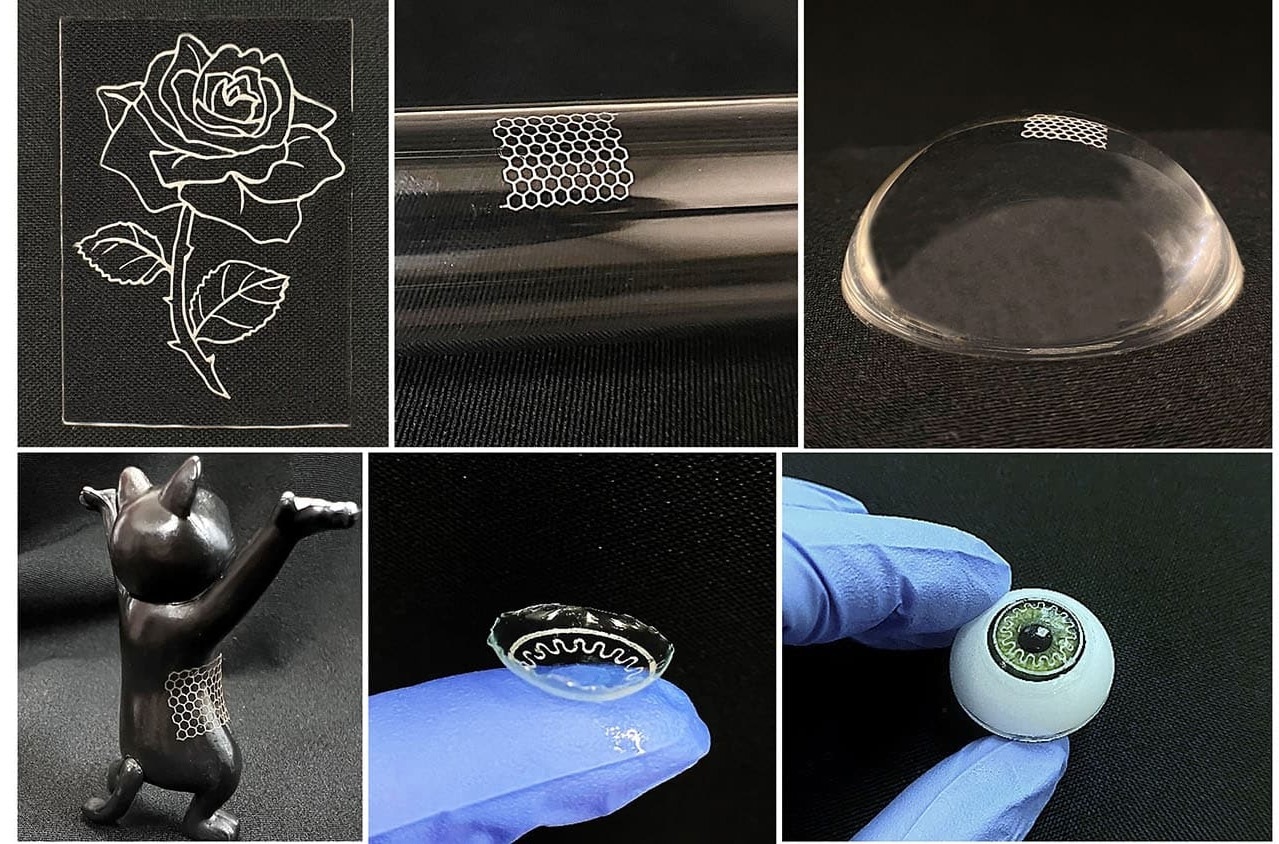Reviewed by Emily Henderson, B.Sc.Nov 22 2022
At North Carolina State University, scientists have illustrated a new method for instantly printing electronic circuits onto corrugated and curved surfaces.

Image Credit: Yuxuan Liu.
This study sets the stage for a range of new soft electronic technologies, and scientists have used the method to prototype so-called “smart” pressure-sensitive latex gloves, contact lenses, and transparent electrodes.
Many existing techniques for creating printed electronics using various materials exist, but limitations exist. One challenge is that existing techniques require the use of polymer binding agents in the ‘ink’ you use to print the circuits. This impairs the circuit’s conductivity, so you have to incorporate an additional step to remove those binding agents after printing.
Yong Zhu, Study Corresponding Author, North Carolina State University
“A second challenge is that these printing techniques typically require you to print on flat surfaces, but many applications require surfaces that aren’t flat,” stated Zhu, Andrew A. Adams, Distinguished Professor of Mechanical and Aerospace Engineering at NC State.
We’ve developed a technique that doesn’t require binding agents and allows us to print on various curvilinear surfaces. It also allows us to print the circuits as grid structures with uniform thickness.
Yuxuan Liu, Study First Author, and PhD Student, North Carolina State University
The initial step utilized in the new method is to make a template for the appropriate application that integrates a particular pattern of microscale grooves. Further, the template duplicates that pattern in a thin elastic polymer film. Further, scientists fix the thin polymer film to the appropriate substrate, which could be curved or flat.
Currently, the small grooves in the polymer are packed with a liquid solution comprising silver nanowires. The solution can dry at room temperature, outpacing silver nanowires in soft material with the preferred shape and circuit pattern.
For the method to be illustrated, the scientists made three proof-of-concept prototypes. One was a “smart” contact lens along with built-in circuits. This can be utilized to quantify the eye's fluid pressure, which is appropriate for a few biomedical applications.
One was known as an adaptable, transparent electrode with circuits printed in a grid pattern, which could be utilized in solar cells or on touch panels. The third is known as a latex glove that consists of circuits printed on it that act as pressure sensors. This has applications in robotics and human-machine interface applications.
We think this could be scaled up pretty easily in terms of manufacturing. We’re open to talking with industries who are interested in exploring this technique’s potential.
Yong Zhu, Study Corresponding Author, North Carolina State University
This study was co-authored by Brendan O’Connor, a professor of mechanical and aerospace engineering at NC State; Jingyan Dong, a professor in NC State’s Edward P. Fitts Department of Industrial and Systems Engineering; and Michael Zheng, an undergraduate at NC State.
The study was performed with financial support from the National Science Foundation under grants 1728370 and 2134664.
Journal Reference:
Liu, Y., et al. (2022) Curvilinear soft electronics by micromolding of metal nanowires in capillaries. Science Advances. doi.org/10.1126/sciadv.add6996.